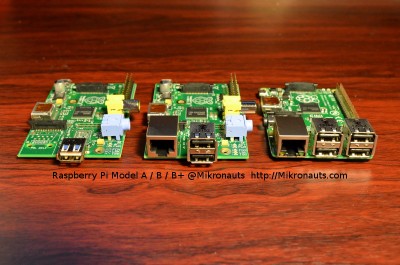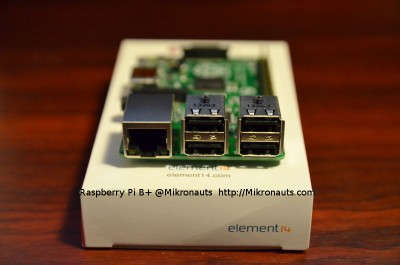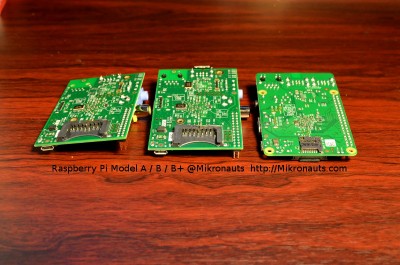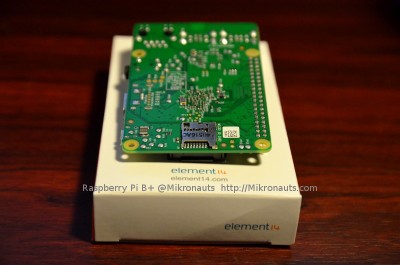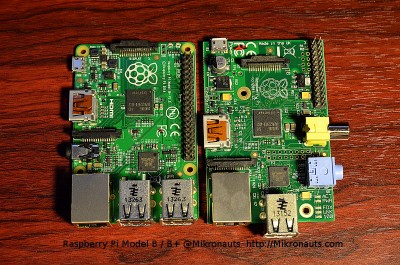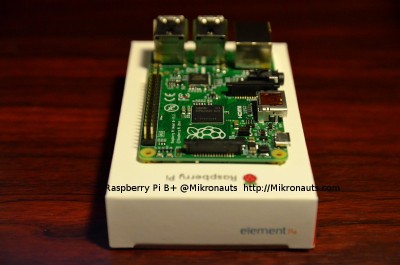Raspberry Pi Model B+ Review
4 USB 2.0 Ports
The Raspberry Pi Model B+ replaced the LAN9512 USB/Ethernet controller with a LAN9514 giving us two more USB ports. The four ports can now provide a total of 1.2A when using a 2A power supply for the Pi. Better over current protection and improved hot plug support round out the the USB changes on the Model B+.
(Click for larger image. Raspberry Pi Left: Model A Center: Model B, Right: Model B+)
I find this to be the most useful improvement for the Model B+
For most users, it eliminates the need for an external USB hub, and the associated extra wiring and power supply.
(Click for larger image. Raspberry Pi Model B+ FOUR USB ports!)
This is especially important in an educational setting – it is now possible to make an extremely inexpensive workstation:
- Raspberry Pi Model B+
- 2A USB power supply
- USB keyboard
- USB mouse
- HDMI to DVI cable
- recycled DVI capable monitor
- Cat5 cable to an inexpensive hub -or-
- inexpensive USB WiFi stick
micro SD Socket
(Click for larger image. Raspberry Pi Left: Model A Center: Model B, Right: Model B+)
I FAR prefer the smaller micro SD card socket, as do a lot of others… witness the success of smaller uSD to SD adapters!
(Click for larger image. Raspberry Pi Model B+ uSD socket)
I understand the Pi Foundation’s initial choice of the larger SD card format as the micro SD cards are far easier to misplace, and subsequently harder to find – however the large SD cards stuck out too far from the Pi, and there were several reported instances of people breaking the SD card holder.
Switching Power Regulation
(Click for larger image. Raspberry Pi Left: Model B, Right: Model B+ … power regulation is on the upper left of the Pi’s)
This is the second most important improvement, closely following the four USB ports.
(Click for larger image. Raspberry Pi Model B+ switching power regulation on bottom right)
The improved power supply is the main reason that the Raspberry Pi Model B+ has much greater compatibility with USB WiFi dongles – and other power hungry USB peripherals.
(You can read my Raspberry Pi Model A / B / B+ USB WiFi stick roundup by clicking HERE)
The increased efficiency of the dual switching supply (for 3.3V and 1.8V) also reportedly reduces power consumption, obviously extending the possible runtime of battery powered applications such as Raspberry Pi based robots.
I look forward to finding out how much extra life my bots will get!
